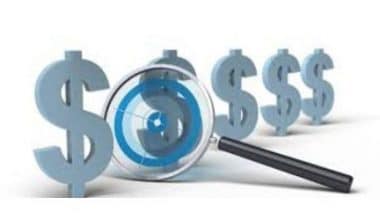Cash on hand is an important part of running a profitable operation and influences numerous decisions. It’s an important indicator of a company’s financial health. If you wish to increase your revenue, you would consider the concept of cash on hand.
Further in this article, we shall be discussing the cash on hand of some companies, such as Microsoft, Apple, Berkshire Hathaway, and Tesla. We’ll also show you how to calculate cash on hand from a balance sheet using an example. Join us as we get started.
Understanding Cash on Hand
This refers to the amount of money that a company has on hand at any given time. Furthermore, it is the amount of money that a company has left over after paying all of its expenses. When it comes to balance sheets, they illustrate that a business’s balance is in the form of coins and notes. Unless a worker is paid in cash, they are normally compensated in coins and notes, implying that a payment record exists.
Cash on hand refers to funds available to businesses that will be spent as needed, as opposed to assets that must be sold to generate further cash. Typically, an asset that may be liquidated for cash in 90 days or less is considered cash on hand by business owners. The cash balance also influences what kinds of projects a company can start, including any financial obligations that can be sustained without borrowing money or falling deeper into debt.
Finally, it can be used for any purchase-related business function. Knowing how much cash you have on hand can help you get financing, develop business strategies, and meet accounting standards.
Days Cash on Hand
Days cash on hand refers to the number of days an organization can keep paying its operating expenses with the cash it has on hand. When a company is just getting off the ground and hasn’t yet generated any revenue, managers should be aware of the day’s cash on hand. It’s especially worth revisiting during the slowest period of a seasonal sales cycle when no sales are expected. During a transition to a new product line, when sales of the old product line are bad and dropping, you should also look at days of cash on hand.
How to Calculate Days Cash on Hand
The assumption that there is no cash flow from sales when calculating days cash on hand is that there are just operating expenses, such as salary, rent, and utilities.
To calculate the amount of these operating expenses, deduct all non-cash expenses from the income statement’s operating expenses subtotal (usually depreciation and amortization). Then multiply by 365 to get the daily cash outflow amount. Finally, divide the total amount of cash on hand by the daily cash outflow. The formula is as follows:
Days cash on hand ((Operating expenditures – Noncash expenses) / 365)
Businesses With Most Cash Reserves
Many reputable businesses nowadays have billions of dollars as cash reserves, which is more than enough to finance any kind of project. Let us look at some of those businesses with such cash balances.
#1. Apple
Apple tops the list as the American enterprise with the most cash on hand. It’s a multinational technology firm based in the US that specializes in consumer goods, computer software, and internet services. It is the world’s most valuable firm and the largest information technology company by revenue (totaling $274.5 billion in 2020). Apple is the fourth-largest PC vendor by unit sales and the fourth-largest smartphone manufacturer as of 2021. Along with Facebook (Meta), Amazon, Google (Alphabet), and Microsoft, it is one of the Big Five American information technology corporations.
In addition, Apple has some of the largest cash on hand in the US regularly in comparison to Microsoft, Tesla, and others. According to Apple’s fiscal first-quarter financial report, the company now has $195.57 billion in cash on hand.
This is a 2% increase over the cash on hand in the fiscal fourth quarter of 2020 when Apple recorded $191.83 billion. However, it’s a 5.5 % decrease from the $207.06 billion in cash on hand Apple held in the same period last year.
#2. Berkshire Hathaway
Another company we would be discussing cash on hand is the famous Berkshire Hathaway Inc, an American multinational conglomerate holding company based in Omaha, Nebraska. Warren Buffett, the company’s chairman, and CEO, and Charlie Munger, the company’s vice chairman, are known for their control and leadership. Buffett focused on long-term investments in publicly traded companies early in his career at Berkshire, but more recently he has purchased entire companies.
According to the Forbes Global 2000 list and formula, Berkshire Hathaway is the eighth-biggest public corporation in the world, the tenth-largest conglomerate by revenue, and the largest financial services company by revenue in the world.
Berkshire Hathaway’s cash on hand topped $149.2 billion in the third quarter, exceeding a previous high established in early 2020, according to the company’s earnings announcement. The new high came despite Buffett pouring more money into stock repurchases, with $7.6 billion in repurchases in the quarter, the third-highest total since the board modified its buyback strategy in 2018.
Note that Berkshire Hathaway was able to embark on the buyback strategy because it had enough cash on hand to do so. If more businesses adopt this concept of cash on hand as Berkshire Hathaway did, debts will be paid.
#3. Tesla
Tesla is another company whose cash on hand has hit up over the years. It is an electric vehicle and clean energy corporation headquartered in Palo Alto, California. The company has already carved up a strong leadership position in the fast-growing electric-vehicle sector, with trailing-12-month revenue of almost $28 billion and analysts expecting that sales will climb 46.1% next year. However, a 34 % boost in Tesla’s cash on hand will make it more difficult than ever for competitors to catch up.
Additionally, Tesla announced earlier this year that it aimed to increase its yearly capital expenditures over the next two years as it continues to build new plants and integrate more battery design and manufacturing vertically. Its mission, according to Musk, is to assist accelerate the transition to sustainable transportation and energy, which will be achieved through electric vehicles and solar power.
Tesla didn’t necessarily require additional funds. Quarterly free cash flow was $1.4 billion in the third quarter, up from $371 million the previous quarter. In the quarterly update, the company also stated that it “should have sufficient liquidity to cover our product roadmap, long-term capacity expansion ambitions, and other expenses.”
Despite the recent boost in Tesla’s debt rating, it is already outdated. Tesla has now posted better-than-expected third-quarter results, including a significant increase in cash on hand. In addition, the firm announced a $5 billion stock sale, putting the corporation in a strong financial position.
Tesla’s Stock Sale
Following the recent occurrence, the timing of their stock sale couldn’t have been better. The stock has increased by more than 840 % in the last year. Furthermore, the growth stock has reached an all-time high, giving Tesla a market valuation of almost $600 billion. Based on the company’s stated $14.5 billion cash on hand at the end of Q3, a $5 billion capital raise would decrease Tesla shareholders’ equity by less than 1% while increasing the company’s total cash on hand by 34%.
This capital increase not only strengthens Tesla’s capacity to maintain its dominance in the fast-growing electric-vehicle sector. It also adds to the company’s ability to repay its debts in the future. Tesla’s cash on hand will not only strengthen its financial sheet but will also enable the business to invest more confidently in growth possibilities.
#4. Microsoft
Last but not least is Microsoft, whose cash on hand comes next after Apple, topping that of Tesla and Berkshire Hathaway. Microsoft Corporation is a technology behemoth, one of the world’s largest which over the years has evolved into one of the companies with the biggest cash on hand. Microsoft had $136 billion as cash on hand at the end of 2020. This was an increase of 2.02% over the previous year.
Moreover, Microsoft has $130.33 billion in cash on hand at the end of the first quarter of 2021. The corporation is the most popular software system and application developer for personal computers. In addition, the company publishes books and multimedia materials, manufactures hybrid tablet computers, and sells video gaming consoles.
Calculate Cash On Hand From the Balance Sheet
Away from the big names, we have come up with an example of a regular business to help you understand exactly what cash on hand is all about.
Assume you opened a small retail shop with standard operating expenses but no investing or financing activities. You began your first month with $500 cash in your register and $1500 in a checking account, for a total of $2,000 in CCE. To determine your net cash from operating activities at the end of the month, add your sales receipts to the $2,000 cash at the beginning of the month and subtract cash expenses:
$2,820 in sales receipts
Rent is $1,000.
A supplier ($500).
B supplier ($200).
($20) Window Washer
Cash at the start of the month: $2,000, while
$3,100 in net cash from operating activities.
On the same day that you performed this calculation, you would add the cash from your register to your current checking account balance to determine the amount of cash you have for the start of the next month. The amount in the register or the balance on hand as found in a cash ledger can be manually counted as long as they are accurate. It is important to note that the cash on hand at the end of the month may not be the same as the net cash accumulated or lost during that month.
How to Calculate Cash on Hand from Balance Sheet
Currency, bank accounts, and undeposited checks are all examples of cash on a balance sheet. It’s a good idea to keep some cash on hand in case of unexpected expenses. The “current assets” section of the balance sheet is where cash is reported. Cash balances are used to assess the health and solvency of a company over time. Lenders and investors are often interested in a company’s available cash flow because it indicates whether the company will be able to meet its obligations or pay dividends.
Below is an example showing the cash on hand of ABC company as at the end of the second quarter of 2019
| Cash flow Operations | ||
| Net Earnings | 3,000,000 | |
| Additions to Cash | ||
| Depreciations | 15,000 | |
| Decrease in Accounts Receivable | 10,000 | |
| Increase in Accounts Payable | 10,000 | |
| Increase in Taxes Payable | 4,000 | |
| Subtractions from Cash | ||
| Increase in Inventory | (20,000) | |
| Net Cash From Operations | 3,019,000 | |
| Cash flow from Investing | ||
| Equipment | (700,000) | |
| Cash flow from financing | ||
| Notes Payable | 15,000 | |
| Cash flow for the ABC Ended | 2,334,000 |
The net cash flow for the second quarter of 2019 was $2,334,000, according to this cash flow statement. The majority of the positive cash flow comes from operations, which is a healthy sign for investors. It indicates that core businesses are profitable and that sufficient funds are available to purchase new merchandise.
Furthermore, the company’s ability to invest in itself is demonstrated by the purchase of new equipment. Finally, the company’s cash position should assuage investors’ concerns about the notes payable, as liquidity is ample to meet that future loan expenditure.
How Important is Cash On Hand?
You may ask how important is Cash on hand to companies, in other words, what are its benefits. In case we haven’t hinted at that previously, we are now going to discuss the importance of cash on hand not just for companies but for individuals as well.
#1. Assists in the growth of your company
If you want your company to grow or expand, you’ll have to put money into it. I’m talking about investing in new technology, purchasing real estate, or hiring new people. These are frequently one-time purchases. So, rather than taking out a loan or a line of credit and being stuck paying interest for years, it makes more sense to use your cash on hand, as Berkshire Hathaway did.
You can also expand your company by purchasing another one. This might sometimes appear to happen overnight. The truth is that other business owners are looking at this precious asset as well. You can miss out on a great chance if you don’t have cash on hand to finance or purchase a valuable firm as Microsoft did with Nuance Communications for $16 billion.
#2. Assists in weathering a slump in the economy
External variables such as COVID-19, as we continue to see, can cause an economic slowdown. While this number is likely to rise, Yelp stated on August 31, 2020, that “163,735 total U.S. businesses on Yelp have closed since the pandemic began.”
Even if you can reopen, which we hope you can, you may be required to follow new criteria issued by agencies such as the CDC. Cleaning and disinfecting the facility, for example, or adding a new ventilation system or plexiglass partitions.
Having cash on hand, for example, is a lifesaver during these trying times. It might also assist you in adapting without going into debt.
#3. You will be able to make timely payments on your debts
This juggling act can be stressful, as I can tell you from personal experience. As an individual, assume your phone bill is due on the 16th of each month. What is the issue? It’s the 12th of the month, and you still haven’t received payment from a client. What’s worse? You are unable to pay the bill due to a lack of funds.
You’ll be charged a late fee if you don’t make this payment. It’s also possible that your service will be turned off. Let’s not even get started on the sleepless nights you’ve been having because you’re worried about paying your bills.
Not only can having cash on hand lessen financial stress and worry. It also assures that you won’t incur any unnecessary late fees as a result of timely payment.
#4. Allows you to deal with unexpected situations
Natural disasters, equipment/system failures, legal challenges, and medical situations that are not covered by insurance are all possibilities. “That’s why business owners need to know how to budget for unexpected expenses.” Corporations face more disasters in their operations, especially legal challenges.
For example, the lawsuit against Microsoft in 2020 for allegedly conspiring to illegally increase product prices. If Microsoft as a corporation didn’t have cash on hand, it wouldn’t have been able to reach the $400 million agreement with the Canadian customers. Also, it was with the cash on hand that Apple Inc. agreed to pay $30 million to settle a complaint filed by employees who claim they were subjected to off-the-clock security bag checks.
Types of Cash on Hand
Although there is typically only one concept of cash on hand, it can encompass numerous sorts of money or finances. The following are instances of several sorts of cash on hand:
- Actual cash, including change
- Savings accounts (both checking and savings accounts)
- Assets that can be readily converted to cash are considered liquid.
Some firms use the terms “cash on hand” and “petty cash” interchangeably because both cover unforeseen expenses. Petty cash often refers to a specialized account with limited funds to handle basic, little costs; nonetheless, it is still regarded as part of the total cash on hand because it is quickly accessible.
50 percent of small businesses can only cover 15 days of expenses with their cash reserves in the event of a disruption, according to research.
4 In order to raise cash on hand, it is necessary to boost cash flow in general. The key is just raising revenue or decreasing debt. Conducting market research and adjusting prices may assist increase sales.
Tips for Determining How Much Cash to Keep On Hand
If you’re assisting with a company’s finances, the following tips can help you maintain adequate cash reserves at all times:
Estimate monthly operating costs
Your business’s monthly operational expenses are a major factor in determining how much cash you should have on hand. Depending on your industry and business strategy, it may be beneficial to have sufficient cash on hand to cover three to six months of operational expenses. In the event of unanticipated circumstances or economic trouble, your business’s cash on hand will allow it to adjust and endure less profitable periods.
Consider industry and business model effects
Different industries and types of firms have varying financial realities that impact the number of liquid assets they can maintain. For instance, a real estate development company with numerous properties can typically retain less cash on hand since its principal assets — land and homes — increase in value over time. Additionally, these properties are frequently worth a substantial amount to begin with, suggesting that the corporation may swiftly sell a piece of real estate to acquire finances if necessary. Other firms, such as restaurants, may have slim profit margins and be required to maintain low cash reserves.
Consider opportunity cost
Opportunity costs are the expenses incurred when the most profitable course of action is not pursued. They must be evaluated in connection to cash on hand because money in bank accounts grows slowly, whereas money invested in bonds or other assets might provide substantial profits.
A hotel operator, for instance, may be able to improve revenue by remodeling a facility prior to the busy season. The hotel operator may be optimistic that the remodeling will result in more revenue, but in the short term, the hotel will have to operate with less cash on hand than desired. The hotel owner must compare the amount of money they would lose without the remodeling against the hazards posed by having a smaller reserve fund.
Document expenses carefully
Variable costs such as labor, maintenance, and purchases can have a significant impact on the amount of money your company owes at the end of the month. Especially if numerous individuals in your firm make purchases, it is essential to thoroughly document all prices. Ensure that you are continually reviewing your expenditures to ensure you are comfortable with their impact on your available cash. After paying an unexpectedly high payment, for instance, you may opt to postpone another purchase to save money.
Consider alterations in business levels
Sometimes, younger organizations have a less precise idea of how their annual business volume may fluctuate. If it is conceivable that your revenue will fall when the seasons change, you might consider reserving additional cash. As you gain a better understanding of how your business contracts and grows, you may change your cash reserves to ensure that you are prepared for unforeseen expenses while still functioning efficiently.
Is cash on hand debit or credit?
Cash on hand is a resource for the company. It will therefore have a debit balance. However, if there is payment involved in the transaction, it may be credit side.
Is cash on hand debit or credit?
Cash on hand is a resource for the company. It will therefore have a debit balance. However, if there is payment involved in the transaction, it may be credit side.
What is the journal entry for cash in hand?
Cash is accounted for as an asset on the balance sheet. However, the capital of the company increases when money is brought in.
Is cash on hand a current or fixed asset?
Assets that may be quickly sold for a predetermined sum of money are known as cash equivalents.
Is cash in hand a contra entry?
Transactions involving cash and a bank account are referred to as contra entries. In other words, a counter entry is any entry that has an impact on both bank accounts and cash.
Is cash on hand same as liquidity?
Cash on hand that is sufficient to meet obligations is referred to as liquidity. Cash or property that is easily convertible to cash without suffering a significant loss in value are examples of liquid assets.
Conclusion
In conclusion, cash on hand is a significant aspect for individuals as well as corporations. It also applies to people who wouldn’t want to miss out on an investment opportunity because they have no savings. Corporations like Apple, Tesla, and Microsoft, among others, as seen in this post, have the most cash on hand, and it would be nearly impossible for them to go down in debt.
Related Articles
- TESLA SOLAR: Panels, Powerwall, & Solar Roof 2021 (updated)
- Dividend Mutual Funds: Definition, How they Work, Pros & Cons
- Brand Strategy: How to Develop an Effective Brand Strategy with Examples
- Mutual Funds vs. Index Funds: All You Should Know
- Demand Management: Overview, Comparisons, Pros & Cons
Frequently Asked Questions Cash On Hand
Is Cash on Hand Debit or Credit
When you debit a cash account, for example, you’re increasing the quantity of cash on hand. Debiting accounts payable, on the other hand, signifies that the amount of accounts payable liabilities is reduced. Accounts of assets. A debit raises the balance, whereas a credit lowers it.
Why do Companies Keep Cash on Hand
Many businesses also hold a sizable cash reserve to pay dividends and, in some cases, buy back stock on the open market. But, most importantly, they maintain cash on hand in case the company requires some financial assistance. Businesses put money aside and save for rainy days.
Is Cash on Hand an Asset
The most fundamental sort of asset is liquid assets, which are used by both consumers and corporations. Cash on hand is considered a liquid asset since it may be accessed quickly. Cash is a form of legal money that can be used to settle a company’s existing liabilities.






